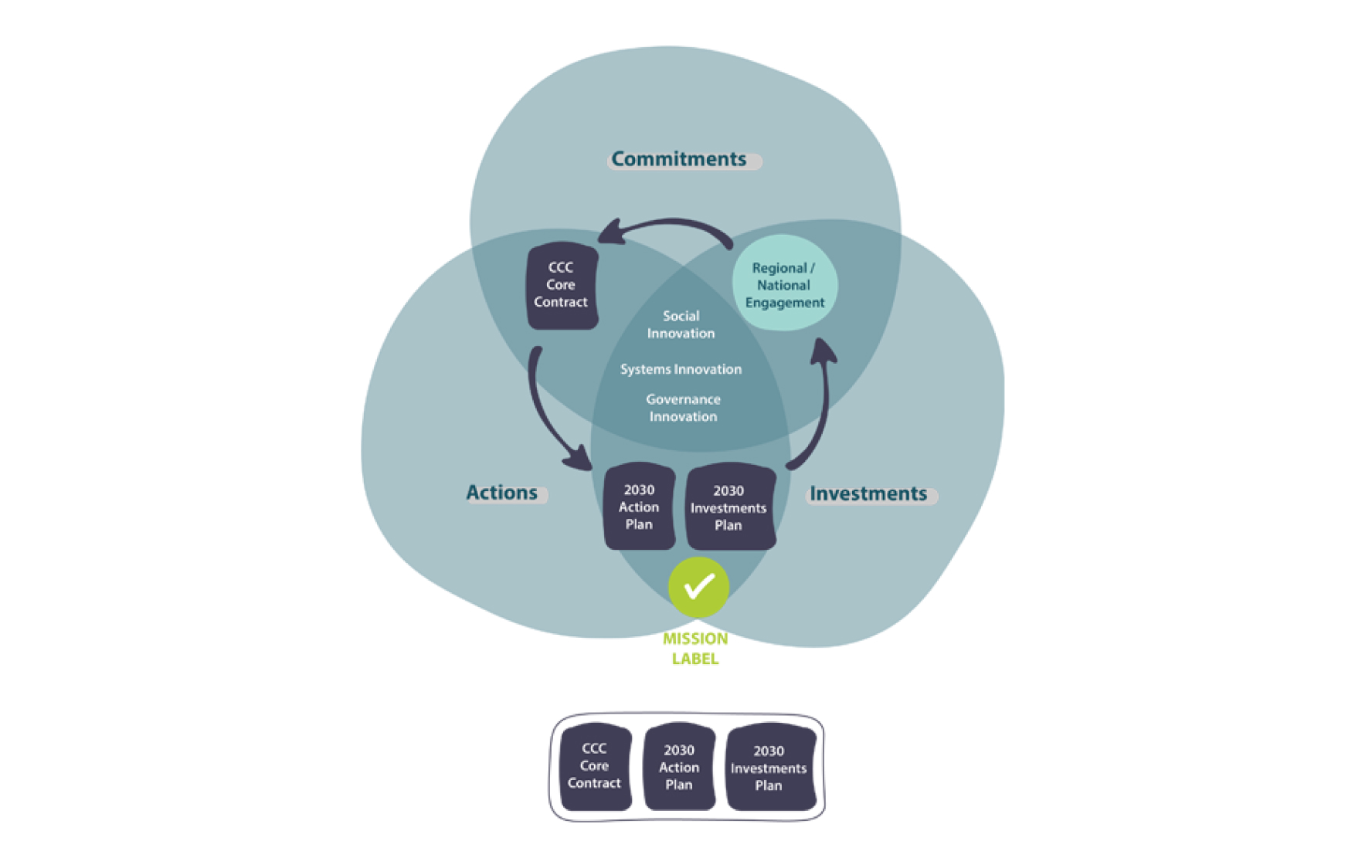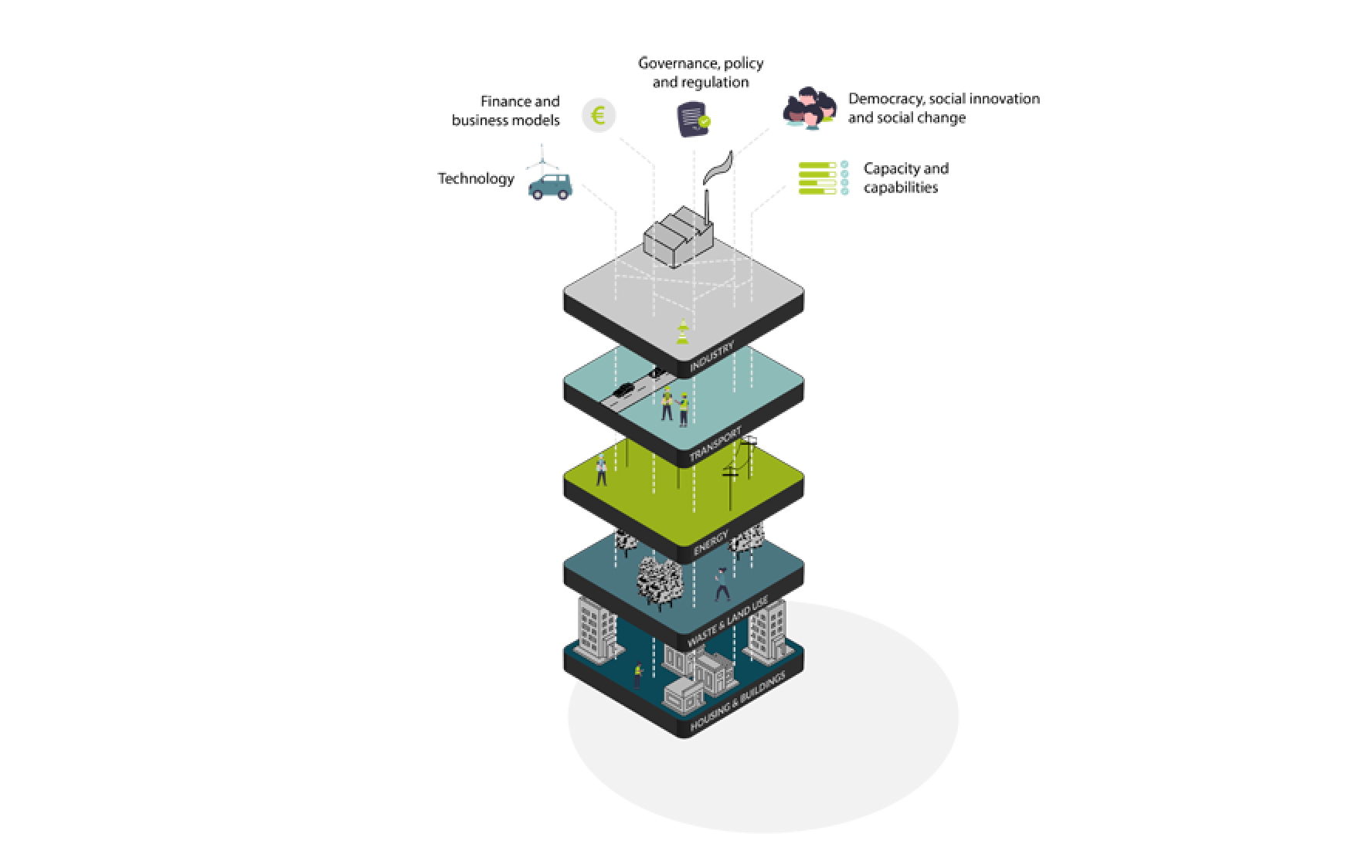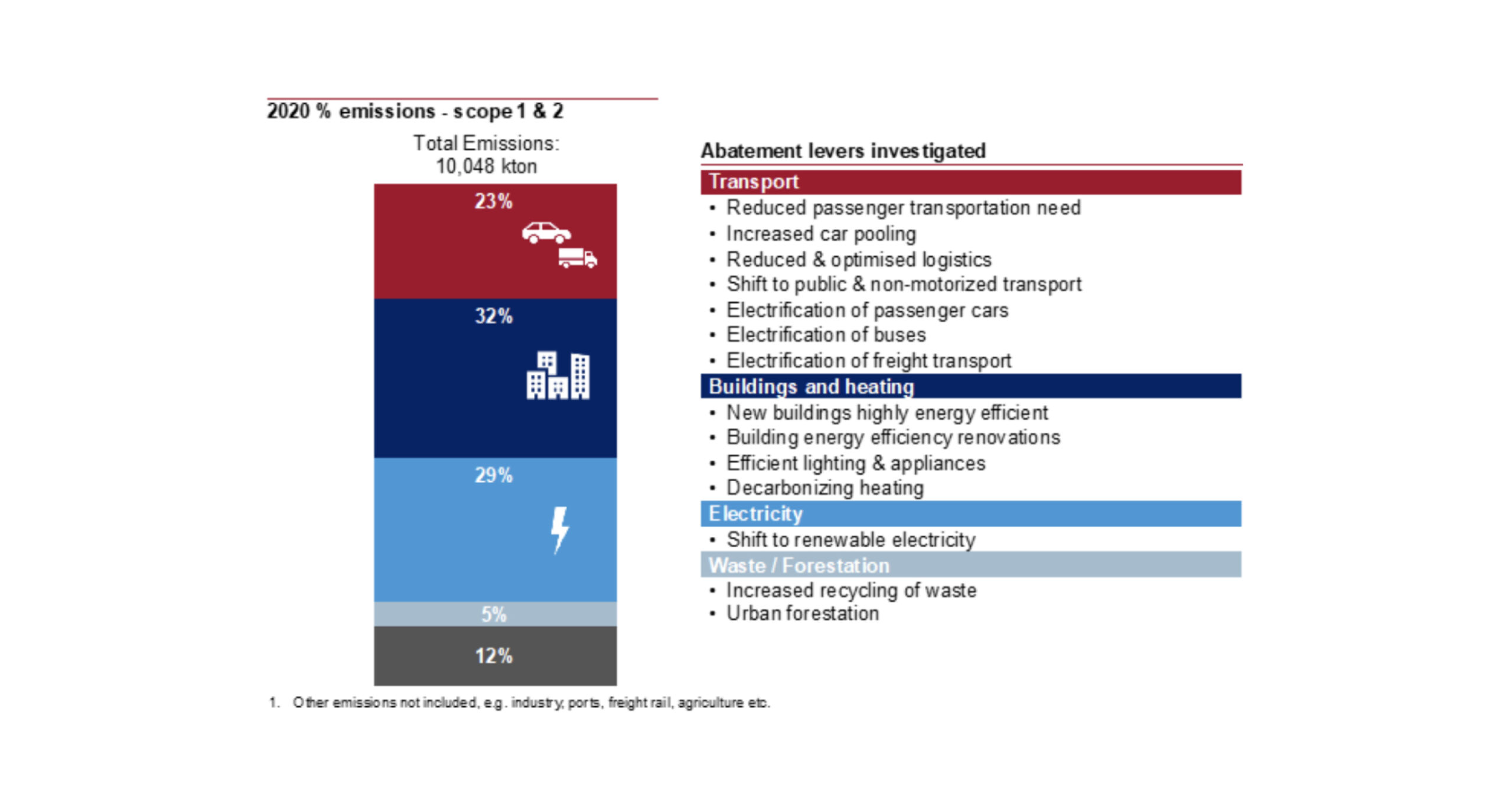Climate Agreements are one of the main tools at the disposal of the European Cities Mission to achieve climate neutrality within cities.
What are the Climate City Contracts?
The Climate City Contracts are voluntary agreements between cities and the European Commission based on the principle of collaboration and mutual commitment to address the challenges of climate change at the local level.)are voluntary agreements between cities and the European Commission that are based on the principle of collaboration and mutual commitment to address the challenges of climate change at the local level. Through these contracts, cities commit to implement concrete measures to reduce greenhouse gas emissions and achieve climate neutrality.
The Climate City Contracts work as follows: participating cities commit to setting ambitious emission reduction targets and implementing specific actions to achieve them. These actions may include improving the energy efficiency of buildings, promoting sustainable mobility, promoting renewable energy and adopting sustainable urban planning practices.
In return for their commitment, cities receive technical, financial and political support from the European Commission and other partners involved in the European Cities Mission. This may include funding for projects, assistance in developing decarbonization strategies, exchange of best practices and access to collaborative networks.
What do the Climate City Contracts seek?
The Climate City Contractsnot only focus on reducing emissions, but also on creating more livable, inclusive and resilient cities. They seek to promote sustainable urban development that improves the quality of life of citizens and addresses the challenges of climate change.
How are the Climate Agreements constituted?
The Climate City Contractsare a process and a document with three interrelated components: Commitments, Actions and Investments.

- The Commitments reflect the results of a co-creation process with local, regional and national stakeholders to establish new ways of working together to achieve climate neutrality more quickly. It includes a shared ambition for 2030 and a strategy for achieving it, as well as the specific commitment(s) for action by stakeholders in the agreement.
- The 2030 Climate Action Plan identifies strengths and gaps in existing strategies, policies and plans, and uses all levers of change to create a coordinated portfolio of interventions to achieve the 2030 ambition.
- The 2030 Climate Investment Plan mobilizes and strategically organizes public resources and addresses how to attract private capital to finance cities' pathways to climate neutrality.

The Climate Agreement is a living document living document and should be reviewed periodically to add new stakeholders, concrete commitments, actions and/or investments, and to reflect on what works and what does not. The Mission Cities Climate Agreement is submitted for validation to the European Commission for validation to receive the "Mission Label". "Mission Label", a quality assurance certification that is expected to unlock synergies with other EU funding programs and other funding resources.
The economic model for decarbonization
The economic model for the decarbonization of cities is a tool that helps cities evaluate the costs and benefits of decarbonization actions and provides valuable information to make informed decisions and develop effective and profitable strategies to reduce greenhouse gas emissions in Spanish cities. This tool is the methodological basis of the Climate City Contracts.
The economic model for decarbonization of cities is a tool used to assess the costs and benefits of planned decarbonization projects in cities. The goal is to help cities make informed decisions on how to reduce greenhouse gas emissions in an efficient and cost-effective manner.

What is the process of the economic model?
Current situation of the city
The model starts by collecting data on the city's current situation, such as greenhouse gas emissions, energy consumption and existing transportation systems. It then defines different decarbonization actions that could be implemented, such as improving the energy efficiency of buildings, promoting public transport or transitioning to renewable energy sources.
Cost-benefit impact assessment
The model examines how it would affect key indicators such as greenhouse gas emissions, operating costs, energy savings, and economic and social benefits.
Costs associated with decarbonization
Using data from each city's emissions inventories and specific assumptions associated with each city's decarbonization roadmap, the model estimates the costs associated with each decarbonization action, taking into account factors such as initial investment, operation and maintenance costs, and potential energy savings. It also considers benefits, such as reduced greenhouse gas emissions, economic savings from increased efficiency, and benefits to the health and well-being of citizens.
Return on investment and benefits
The model performs calculations and analysis to compare different decarbonization actions and determine which offer the best return on investment and the greatest benefits in terms of costs incurred. This helps cities identify the most cost-effective and efficient actions to achieve their decarbonization goals.
Scenario and sensitivity analysis
In addition, the model can perform sensitivity analyses and explore different scenarios to better understand the implications of long-term decarbonization strategies. This allows cities to make more informed and strategic decisions on how to allocate their resources and design their decarbonization roadmap.
